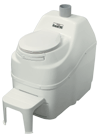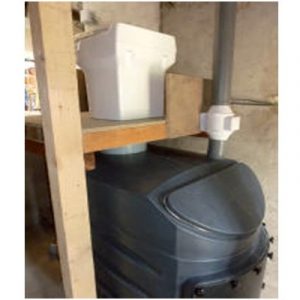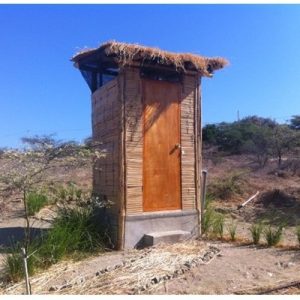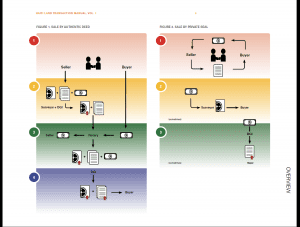
Agriculture
November 9, 2023

Updated on November 9, 2023
·Created on September 26, 2019
The rotary drum composter uses large amounts of ventilation to reduce composting time to 2–3 weeks.
Manufacturing/Building Method
Manufactured by a number of distributors
Intellectural Property Type
Open Source
User Provision Model
Users obtain the product from different distributors.
Distributions to Date Status
Unknown
Design Specifications
Rotary drum sizes my vary, but one study of a rotary drum composter used a 250 L capacity drum of 0.92 m in length and 0.9 m in diameter, made up of a 4 mm thick metal sheet. The inner side of the drum was covered by anti-corrosive coating and mounted on four rubber rollers attached to a metal stand. The drum is rotated manually. 40 mm angles are welded longitudinally inside the drum to mix the wastes, and two holes drain excess water. Waste should be shredded and placed inside at 70% of the total volume, with both half side doors of the drum open to allow additional aeration. Initial moisture content was around 61% and the cattle manure, mixed green vegetables and sawdust entered in a 2.5 : 2 : 1 ratio, on wet mass basis.
Technical Support
There is no technical support provided and users are expected to maintain the product on their own.
Replacement Components
None
Lifecycle
Unknown
Manufacturer Specified Performance Parameters
Rapid compost time of 2-3 weeks, pathogen inactivation, nutrient rich fertilizer.
Vetted Performance Status
The rotary drum composter was assessed for temperature, C/N ratio, TOC, coliforms, metals, turning frequency, and nutrient retention.
Safety
Implementers must take appropriate precautions when working with organic waste, particularly cattle manure, and ensure complete decomposition.
Complementary Technical Systems
None
Academic Research and References
Kalamdhad, A.S., Kazmi, A.A., 2008, Mixed Organic Waste Composting Using Rotary Drum Composter. International Journal of Environment and Waste Management, 2, pp. 24-36.
Kalamdhad, A.S., et al., 2009, Rotary drum composting of vegetable waste and tree leaves. Bioresource Technology, 100, pp. 6442-6450.
Kalamdhad, A.S., et al., 2008, Stability evaluation of compost by respiration techniques in a rotary drum composter. Resources, Conservation and Recycling, 52, pp. 829-834.
Villasenor, J., et al., 2011, Composting domestic sewage sludge with natural zeolites in a rotary drum reactor. Bioresource Technology, 102, pp. 1447-1454.
Singh, J., Kalamdhad, A.S., 2013, Assessment of bioavailability and leachability of heavy metals during rotary drum composting of green waste (Water hyacinth). Ecological Engineering, 52, pp. 59-69.
Kalamdhad, A.S., Kazmi, A.A., 2009, Effects of turning frequency on compost stability and some chemical characteristics in a rotary drum composter. Chemosphere, 74, pp. 1327-1334.
Varma, V.S., Kalamdhad, A.S., 2015, Evolution of chemical and biological characterization during thermophilic composting of vegetable waste using rotary drum composter. International Journal of Environmental Science and Technology, 12, pp. 2015-2024.
Compliance with regulations
Unknown
Other Information
None

Agriculture
November 9, 2023

Agriculture
November 9, 2023

Agriculture
November 9, 2023

Agriculture
November 9, 2023

Agriculture
November 9, 2023

Agriculture
November 9, 2023

Agriculture
November 9, 2023

Agriculture
November 9, 2023

Agriculture
November 9, 2023

Agriculture
November 9, 2023
Have thoughts on how we can improve?
Give Us Feedback